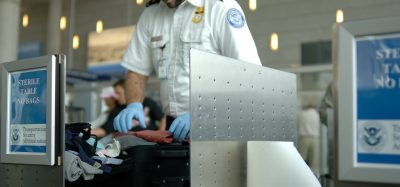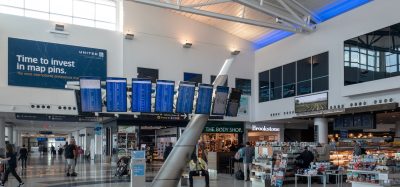BAA’s collaborative approach
- Like
- Digg
- Del
- Tumblr
- VKontakte
- Buffer
- Love This
- Odnoklassniki
- Meneame
- Blogger
- Amazon
- Yahoo Mail
- Gmail
- AOL
- Newsvine
- HackerNews
- Evernote
- MySpace
- Mail.ru
- Viadeo
- Line
- Comments
- Yummly
- SMS
- Viber
- Telegram
- Subscribe
- Skype
- Facebook Messenger
- Kakao
- LiveJournal
- Yammer
- Edgar
- Fintel
- Mix
- Instapaper
- Copy Link
Posted: 16 July 2009 | Colin Wood, Director of Airside and Baggage Operations (BAA Heathrow) | No comments yet
Heathrow is the world’s busiest international airport, handling approximately 471,000 air traffic movements annually and employing over 72,000 people, of which a large number are airside workers. The scale and importance of ensuring efficiency among such a vast number of organisations is clear.
Heathrow is the world’s busiest international airport, handling approximately 471,000 air traffic movements annually and employing over 72,000 people, of which a large number are airside workers. The scale and importance of ensuring efficiency among such a vast number of organisations is clear.
As the airport operator, Heathrow is taking an innovative approach in leading and uniting the airport community in best practice. Traditionally in airport management the operator takes a landlord type role, focusing more on compliance and placing little emphasis on managing ‘tenants’, while airlines often work in isolation from each other. However, Heathrow’s airside operations team is now leading a collaborative approach, engaging more than 400 companies operating airside at Heathrow. This means that rather than working separately, they are working together as a community to ensure safety and improved operational performance to make every journey better.
Heathrow.Safe
BAA is leading one such collaboration, an initiative called Heathrow.Safe, to reduce accidents, ensure safer working practices and make for a cleaner and more efficient airfield. There are a range of new directives, incentives for doing well and penalty points for infringements of airside byelaws and regulations.
CleanSweep is one such directive. It is a twice weekly airside inspection led by BAA and supported by management and staff from all companies who operate in a pre-defined targeted zone. The joint team inspect the area, walking around the apron and aircraft stand looking for foreign object debris, unsafe practices, redundant equipment and inadequate infrastructure. Where safe behaviours are seen they are praised and if unsafe behaviours are observed these are challenged and dealt with. Any items that require attention are added to the appropriate engineering or operational works for remedial action to improve the subject area. Each inspection covers between six to ten stands per visit and the frequency of the programme ensures each zone will be visited twice every six weeks.
The programme is now considered best practice, with some airlines already adopting their own CleanSweep style initiatives. This is an example of how BAA as an airport operator is leading Heathrow’s airside service providers in making the airfield a safer place to work, through encouraging greater interaction between companies and introducing best practice.
Penalty points
Heathrow’s airside roads are used by more than 25,000 licensed drivers in a range of vehicles operating around the clock. At Heathrow, the Airside Operations Safety Unit (AOSU) and the Safety Practices Team are responsible for ensuring airside roads are safe and regulations are followed. In 2007, BAA, in conjunction with the wider airside community, introduced an airside driving licence penalty points system, which is intended to ensure airside workers follow necessary practices.
The system operates in a similar way to driving penalties on the highways, with the accumulation of points acting as a warning to individuals that they risk disqualification if further offences are committed. A maximum of 12 penalty points are permitted, after which the license is revoked for a minimum of three months. For each driving ban the Heathrow Safety Practices Team will discuss the incident or incidents leading to this action and agree an appropriate action plan. Points remain on the license for a period of three years.
BAA has also taken the lead in improving the quality of training available for gaining an airside driving license. In 2007 there were 178 training companies, making it very difficult to ensure a consistently high quality of training. This has now been reduced to 46 training companies, all of which are regularly audited by BAA to maintain training standards. Following successful training, newly licensed drivers are now issued with a unique Airside Driving Permit Number to which any points are linked.
These measures have been in operation at Heathrow for just over 30 months, resulting in a massive 45 per cent decrease in road traffic accidents on the airfield.
Airside caution notices
The success of the airside driving license penalty points has led to the development of a draft proposal for a penalty point programme for non-driving related offences. The Heathrow Safe Leadership Group is working with various forums, including the Joint AOCA Ramp and Baggage Committee and the Airport Users Committee, comprised of airlines and handlers to ensure full engagement with airport companies.
All airside workers who contravene airside rules and regulations, which ensure airside safety, will receive penalty points, held on their Airside ID. The list of infringements includes the failure to wear personal protective equipment, not displaying ID correctly and smoking airside. Penalty points will range from three points for lesser infringements up to 12 points for the most serious; an individual total of 12 points or more will result in the withdrawal of the individual’s airside ID.
An Airside Caution Notice (ACN) will first be issued to the airside worker. This will detail the facts of the infringement and will be copied to the Safety Practices Team. They will then review the information available and determine and award penalty points or warnings accordingly. Accumulation of points will trigger additional training, focusing on the offence committed to limit the potential for the infringement to recur. Individuals that exceed the maximum point total will have their airside ID suspended for a set period and be required to be retrained and to pass a retest prior to their ID being reinstated.
These measures will be put in place in a phased way so that all airside workers are aware of the new system and understand the process in full.
FOD for thought
Foreign Object Debris (FOD) is an issue for all airports and each year loose objects on airport runways, taxiways and aprons cost the global aviation industry over $1.1bn. At Heathrow, the Airside Operations team is always looking at ways in which to reduce instances of FOD on the airfield. The installation of a Tarsier radar system last year has greatly improved FOD detection and swift removal before an issue occurs. Tarsier is a high-resolution millimetre wave radar and can operate 24/7 in all weathers. It is able to detect very small objects, such as a suitcase wheel or a metal nut, to within an accuracy of one metre at a range of up to two kilometres. The system can detect a range of materials, including metal, plastic, glass, wood, fibreglass and organic matter, day and night and in all weather conditions. The team are now developing new ways to reduce occurrences of FOD overall.
The Heathrow airside operations team have observed that a high proportion of FOD is generated by newspapers, food packaging and similar everyday items. The targeting of FOD reduction at source is being exercised to combat this. Control posts are now briefed to try and stop the problem at potential points of entry and a number of disposal bins have also now been introduced across all control posts. The areas have been introduced into the regular FOD checks that take place several times daily.
The next stage of this programme, is a project aimed at reducing debris generated by vehicles that remain permanently on the airfield which do not use control posts. Disposal bins will be placed at strategic points across the airfield, such as fuelling stations, and a signage campaign will be implemented to inform airside workers about the new disposal units in place and remind them of the potential dangers of FOD on the airfield.
Changes to handler changes process
At Heathrow there are over 50 airline relocations scheduled as part of the £4 billion transformation programme, which will enable airline alliance partners to be housed together. The transformation will see Terminal 2 replaced, a new expanded Terminal 4 check-in area, the world’s largest integrated baggage system, a second Terminal 5 satellite building and other terminal facilities refurbished.
This brings with it operational challenges such as handler moves and changes. In readiness for these, BAA has reviewed the handler processes involved and worked with airport companies to make them more efficient and workable.
The relocations planning process is now very robust, with studies carried out three months prior to any changes for ramp and baggage operations. This supports handlers and provides the airline moves programme with an extra level of resilience.
Integral to this policy review is the Terminal and Executive Airline Operating Committees (AOC), representing airline interest into the approvals process. This allows all parties to contribute. The proposals for a change of handler/handler moves must be supported by both of these committees prior to final approval by BAA and before they can be applied on the airfield. This partnership involvement has given the airside team the endorsement and support necessary to apply the policy effectively.
This partnership has also led to better allocation of space and provision of facilities, right down to changes to paint marking that identify what equipment should be parked in what ramp space and gained the confidence and acceptance of the airport community. The process has given BAA, as the airport operator, greater visibility of some of the more challenging issues and allowed these to be added to the agenda of the Heathrow.Safe Steering group, which can develop solutions and push forward best practice.
Heathrow.Safe website
BAA is building on the Heathrow.Safe initiative and is currently developing a website dedicated to providing safety, organisational and licensing information. This mirrors best practice at other airports around the world and will improve awareness and information sharing across the organisation. The site is due for launch in the summer and the airport community will be closely involved in developing content and updating this as appropriate.
Future working
As the airport operator, BAA is leading all companies at Heathrow in collaborative working and is continuing this ethos through to the development of a new ground handling licence, due to be finalised this summer. This will build on some of the great work that the ramp assurance, baggage and safety practices teams have already begun.
BAA is looking at the issues faced by all airport companies as a whole, therefore offering a better understanding of the challenges that handlers face and giving them the priority they deserve in order to deliver a better service. Through working in this way it ensures the most logical performance measures are used, which the handlers have inputted into together to raise standards. This way, rather than operating separately, the airport is working together as a whole to make every journey better.
















